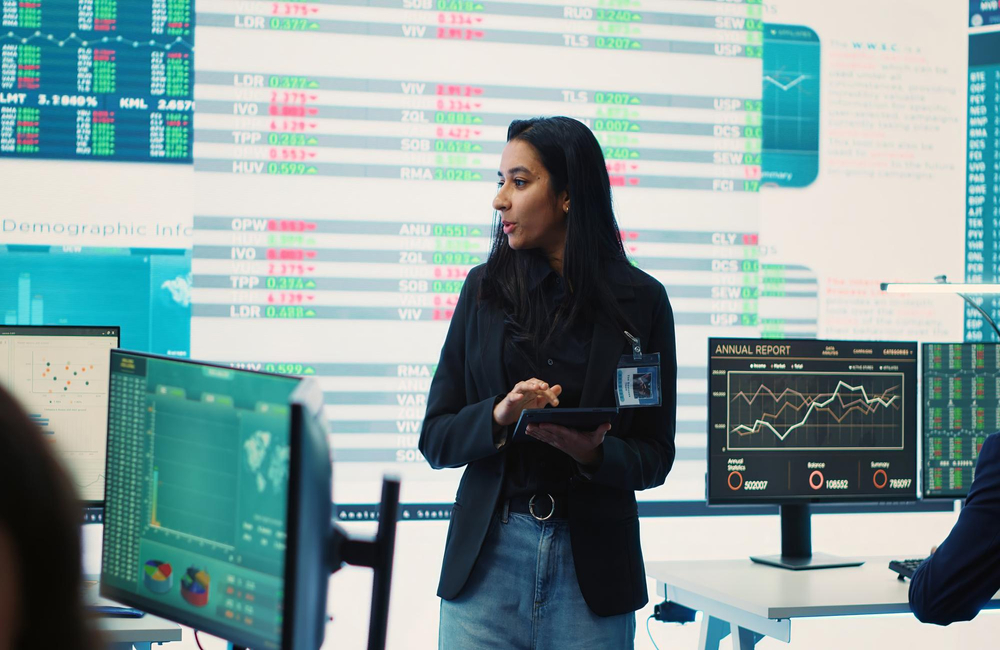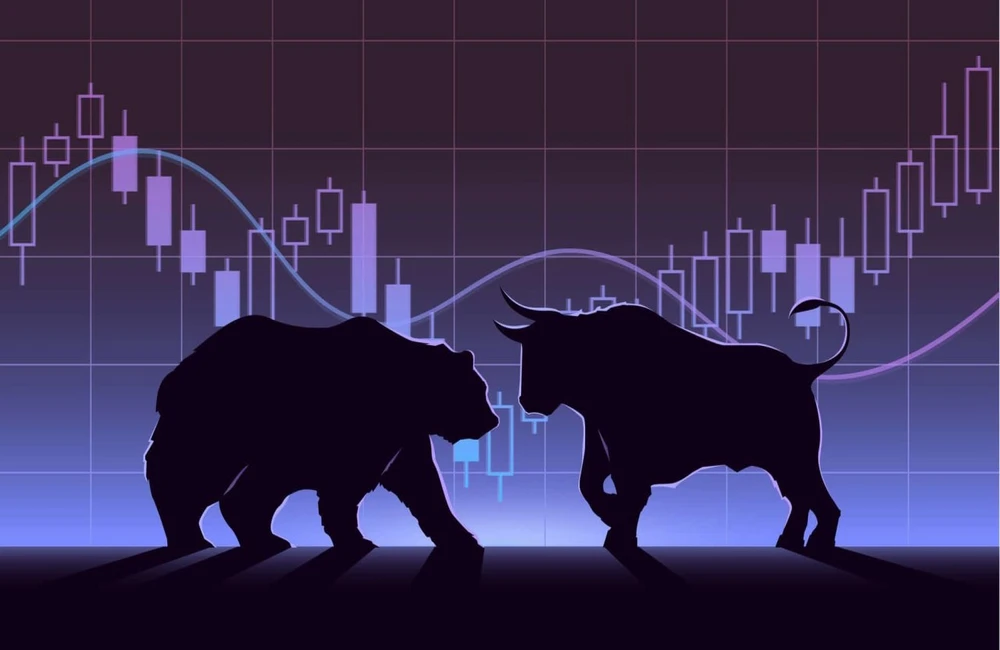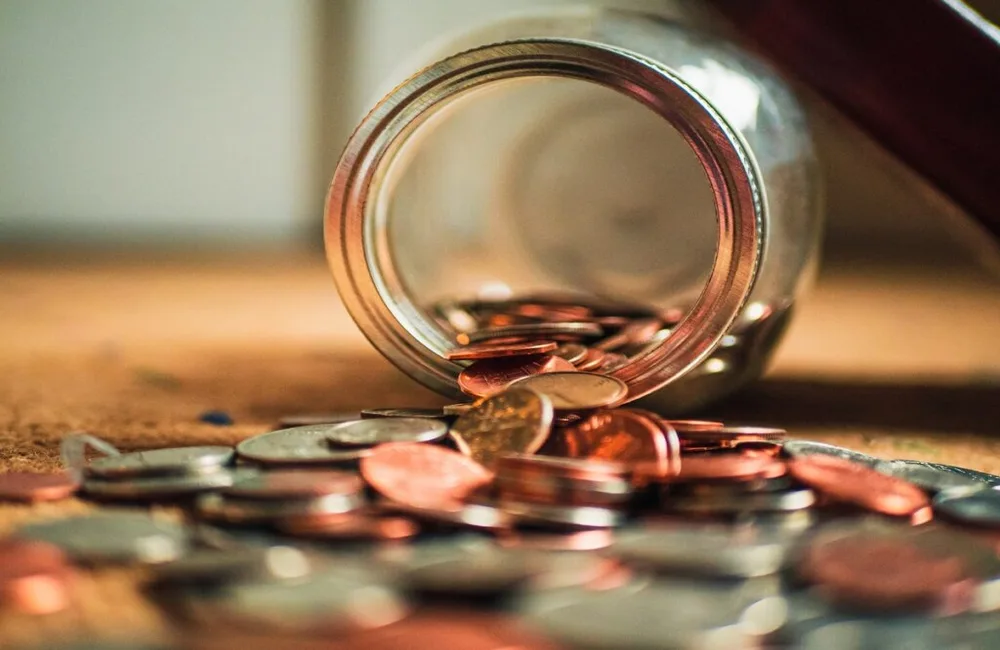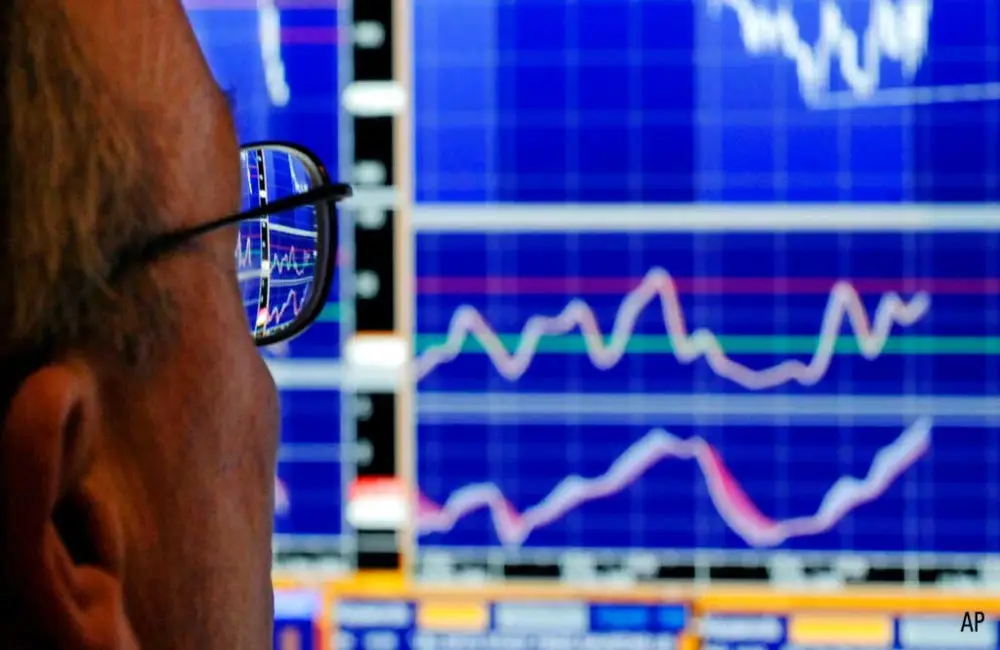ASX futures dropped 54 points or 0.8 per cent to 7079 by 8:00 am on Thursday, suggesting a lower open.
The bumpy ride continued on Wall Street, with major indexes sinking through the midday hours after stocks opened the trading day nearly flat. The S&P 500 dropped 1.1 percent, and the blue-chip Dow Jones Industrial Average was down 0.8 percent. The technology-heavy Nasdaq Composite Index fell 0.7%. The moves, a reversal of gains from Tuesday, continued a volatile holding pattern that has captured markets in recent weeks.
The focus of investors earlier in 2022 on rising rates, which decrease the attractiveness of companies’ future profits, has shifted to worries about a slowdown in the economy, according to T. Rowe Price capital-markets strategist Tim Murray. Between those twin fears, traders have barely had time to catch their breath.
On Tuesday, the World Bank cut its forecast for global growth and said the economy shows signs of stagflation similar to that of the 1970s. A day later the Organisation for Economic Cooperation and Development (OECD) reduced growth expectations in a similar fashion, in light of the continuing effects of Russia's war in Ukraine and of covid lockdowns in China.
“At first, consumers were grumbling about inflation but continued to spend,” Mr. Murray said. “Now we’ve reached the point where it’s causing them to cease to spend.
In Australia, the S&P/ASX 200 ended 0.4% higher at 7121.1 even as bank stocks fell following the RBA’s larger-than-expected rate hike a day before.
The financial and property trust sectors were the worst performers for the session, both down 2.9% at the close.
The big banks closed 2.3% to 6.1% lower, and oh, what a morning for regional lender Bendigo & Adelaide Bank, down 7.2% to be the worst performer on the ASX 200.
Even so, energy stocks soared and closed 4.2% higher. Paladin, Woodside, and Santos closed 13.5%, 5.6%, and 3.4% stronger, respectively.
Boral was up 14.7% after the company announced Vik Bansal would be its new chief executive later this year.
Atlas Arteria was the session's best performer, gaining 16.2% after IFM Global Infrastructure Fund revealed it had accumulated a stake of about 15% in the toll-road owner.
Meanwhile, in commodity markets, Brent crude oil gained 2.6% to US$123.75 a barrel. Iron ore fell 0.2% to US$146.90. Gold rose 0.2% to US$1856.50.
Local bond markets steadied after Wednesday's rout, and the yield on Australian 2-Year government bonds edged lower to 2.70%, and the 10-Year eased to 3.54%. US Treasury 2-year notes yields also moved up to 2.77%, while the yield on the 10-year US Treasury notes was higher at 3.02%.
The Australian dollar was at 71.89 US cents, compared to 72.28 US cents at the previous close. The Wall Street Journal Dollar Index, which measures the US dollar against 16 other currencies, edged up to 95.50.
Asia
Chinese stocks closed higher on bets the economy of that country will keep reopening after Covid-19 restrictions are lifted. That is brightening the demand outlook for the country, meaning energy stocks are being pushed higher. PetroChina rose 2.5% and China Oilfield Services gained 2.1%. The Shanghai Composite Index gained 0.7% to 3263.79, the Shenzhen Composite Index finished 0.5% higher at 2083.42, and the ChiNext Price Index advanced 0.8% to 2576.34. Attention will likely fall on China’s next batch of trade figures for May. Economists polled by The Wall Street Journal expect export growth of 8.0% on-year for the month, more than double the 3.9% rise posted in April. The data will be released on Thursday by the General Administration of Customs.
The Hang Seng Index in Hong Kong climbed 2.9 percent to end at 20697.36 as tech stocks bounced back. Following quarterly earnings and ADR activity overnight, Alibaba Group (BABA) rallied 12% -- its largest one-day percentage gain in nearly a month, and Baidu (BIDU) surged 14%. Peers JD. com, while NetEase and Meituan gained 3.3%-5.6%. Chinese energy giants gained on higher oil prices, with Cnooc up 3.4% and PetroChina rising 2.2%. Among the underperformers were Xinyi Solar and Haidilao, which dropped 1.6% and 0.6%, respectively. The session’s big gains led the benchmark index to pare its loss for the week back to 0.1 percent.
Japanese stocks finished up as tech and real-estate shares drove the market higher, with concerns alleviating somewhat around the cost of borrowing. Operator of a medical-information platform M3 surged 5.6%, and Sumitomo Realty & Development added 4.5%. The Nikkei Stock Average gained 1.0% to 28234.29. The yield on the 10-year Japanese government bond dipped half a basis point to 0.240%. Investors were also watching China’s relaxing its Covid-19 restrictions and the war in Ukraine and their ramifications for crude-oil prices and bond yields.
Europe
European stocks ended lower after the Organization for Economic Cooperation and Development became the latest international institution to cut its forecast for global economic growth this year. The Stoxx Europe 600 was down 0.6 percent, London’s FTSE was down 0.1 percent, the German DAX was down 0.8 percent, and the French CAC 40 was down 0.8 percent.
The OECD on Wednesday trimmed its global growth forecast for 2022 by 1.5 percentage points to 3%, citing the war in Ukraine and coronavirus lockdowns in China.
“To have the risks to the global economy so clearly spelt out, and the implications for Europe, not to mention the UK, spelt out quite so starkly, does appear to have ratcheted up anxiety levels amongst investors pushing yields higher and equity markets lower,” writes CMC Markets analyst Michael Hewson.
North America
US stocks slid Wednesday as investors digested an ambivalent outlook for the world economy and waited for key data about inflation.
Spring’s bumpy ride was veering lower again, with the major indexes sinking through the midday hours after stocks began the trading day near flat. The S&P 500 dropped 1.1 percent, and the blue-chip Dow Jones Industrial Average lost 0.8 percent. The technology-heavy Nasdaq Composite Index fell 0.7%.
Those moves, a reversal of gains on Tuesday, continued a volatile holding pattern that has gripped markets for weeks.
Equities have recovered from the lows of May that brought the S.P. 500 within a hair’s breadth of entering a bear market, defined as a 20 percent decline from a recent high. But investors say the sentiment remains fragile, and many investors aren’t convinced that the rebound will be there to stay. The question is whether the economy can avoid a recession as it contends with rising interest rates and more persistent and higher inflation than many had expected.
Those factors have made for a heavy drag on major indexes this year, with the S&P 500 down roughly 14% year to date. Earlier in 2022, investors were focused on higher rates which eat into the relative value of companies’ future profits, but that worry’s evolved into deeper concerns about an economic slowdown, said Tim Murray, a capital-markets strategist at T. Rowe Price. Sandwiched between those twin fears, traders have had little time to catch their breath.
Of late, the combination of weakening growth and increasing prices has revived fears of stagflation when growth stagnates but inflation juices up prices. The World Bank on Tuesday downgraded its outlook for global growth, saying conditions in the economy are reminiscent of stagflation in the 1970s. In a fresh sign of economic activity slowing, new data showed on Wednesday that a measure of US mortgage applications fell to its lowest level in 22 years last week, showing signs of a pullback in the blistering real-estate market.
“For a while, consumers were complaining about inflation but still spending,” Mr. Murray said. “Now it’s coming to the point where it’s making them stop spending.
U.S. consumer-price index data due Friday will be key, according to Michael Arone, chief investment strategist at State Street Global Advisors. The data is expected to show US inflation held firm at 8.3% in May, year-on-year.
Other pandemic-era price increases, such as the jump in used-car prices, have stuck around despite the economy normalizing. “Are some of those aftershocks beginning to get some relief?” Mr. Arone said, a question Friday’s data could help answer.
Treasury Secretary Janet Yellen faced lawmakers for a second day on Wednesday as part of two days of testimony about the administration’s annual budget request. On Wednesday, Ms. Yellen said the White House is considering rearranging tariffs on Chinese imports as a lever to reduce inflation.
Western Digital dropped $2.50, or 4.1 percent, to $57.82 after it confirmed a settlement with the activist investor Elliott Management that will have it consider splitting its business. Campbell Soup Co. added 71 cents, or 1.5%, to $47.31 after it reported an increase in quarterly sales and raised its sales outlook for the fiscal year.
Smartsheet dropped $2.82, or 6.9 percent, to $37.76 after the software company announced a larger-than-expected quarterly loss. Citrus grower Limoneira (LMNR) climbed $2.54, or 22%, to $13.91 after it said profit topped forecasts.
When companies displayed their first-quarter results to investors over the last two months, profits generally looked good, but there was cause for concern hiding just under the surface, according to Lisa Erickson, head of public markets at US Bank. Input costs, notably wages, have edged higher, with some companies warning earnings will come under pressure in the second half of the year.
“Those are things that do raise a caution flag for us,” Ms. Erickson said.
Stability in government-bond prices has given stocks a firmer ground through the past month, following a sharp selloff in bonds and the resulting rise in yields that has dragged on equity valuations, however. Rising yields on Treasury debt make a safer alternative to stocks more attractive. The yield on the 10-year Treasury note, at 3.028 percent on Wednesday, was up from 2.969 percent Tuesday, but below the high of 3.124 percent hit in early last month. (They move in opposite directions; rising bond yields mean falling bond prices.)
























